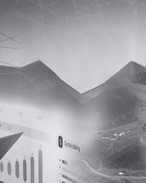Reaching the target rate of 3.1 million tonnes per year will be a major milestone for the south-west refinery as it comes firmly under the control of metals group Billiton.
The London-based company earlier this week confirmed it would pay Alcoa US$1.49 billion for 56% of Worsley, increasing Billiton's equity from 30% to 86%.
Alcoa acquired the stake through its takeover earlier this year of Reynolds Metals Co of the US, but was forced to offload the plum asset to satisfy anti-trust regulations.
Worsley approved its refinery expansion in 1997 and finished construction earlier this year. It is now well into final commissioning, with Billiton earmarking the expanded output for its Mozal aluminium smelter in Mozambique and the Hillside smelter in South Africa.
|
"Production costs have decreased at Worsley, but the impression I get is they will struggle to keep costs falling while oil prices are going up" - CIBC analyst John Macdonald
|
"The target date for raising the production rate to the new capacity [of 3.1Mt per annum] is the end of September," said Dennis Courtney, a spokesman for Worsley Alumina.
"Prior to the expansion we were producing 5000 tonnes [of alumina] per day, and the aim is to lift that to 8500t per day. We are currently producing a bit over 7500t per day, so we're well on the way to getting there."
To feed the expanded refinery, Worsley's annual mining rate has increased from 6.5Mt previously to around 11Mt.
To handle the increased ore movement, Worsley earlier this year upgraded its mining equipment, replacing an ageing fleet of 77t trucks with nine new Komatsu 105t rear dump trucks.
The mining operation also uses two excavators (one 10 cubic metre and one 11cu.m) in back-hoe configuration, along with a 12cu.m front-end loader and a large Komatsu bulldozer.
“The original fleet was purchased in the early 1980s when we started operations," Courtney said. "But with the expansion we need to upgrade it and we went from our own fleet to a leasing deal."
Worsley mines a series of different pits over an approximate area of 500 hectares to feed the refinery. The typical pit size is around 10-20ha.
Overburden, which varies from 0 to 1m deep, is stripped off and retained for rehabilitation purposes. The hard cap underneath is drilled and blasted (or alternatively ripped by the dozer) to expose the 'B' zone bauxite.
Typically the gravel-like ore is mined down to the clay floor at a depth of 2-6m.
It is then trucked 4.5km to a two-stage crusher, which reduces the bauxite particles to less than 20mm in size.
Bauxite is then transported 51km on an overland conveyor to stockpiles at the refinery. From there, the ore is ground further by a series of rod and ball mills before entering the Bayer refinery process.
Worsley is regarded as one of the most efficient alumina refineries in the world, with Billiton estimating the operation's cash costs at around US$80 per tonne.
According to CIBC World Markets analyst John Macdonald, the US$1.49 billion price tag for 56% of Worsley was "right on the money".
Macdonald said Worsley was a low cost alumina producer due to its high quality orebody, efficient labour practices and economies of scale.
"Production costs have decreased at Worsley, but the impression I get is they will struggle to keep costs falling while oil prices are going up as their gas supply contracts are oil price linked," he said.
A recent study by the UK-based CRU International estimated Worsley's cash production costs this year at US$87 per tonne (calculated in 1998 dollar terms).
CRU said Alcoa's Wagerup (also in south-west WA) was the next most efficient refinery with costs of US$93/t, followed by refineries in India and Venezuela.
Wagerup is in the box seat to capture any further increase in demand for alumina, according to analysts.
Alcoa recently debottlenecked the refinery and has approvals in place to expand it to 3.3Mt if market conditions warrant.
"A third processing train would take Wagerup to 3.3 million tonnes a year," Macdonald said. "So if any new aluminium smelters or expansions are in the wings, Alcoa is sitting on the starting blocks, ready to go."























